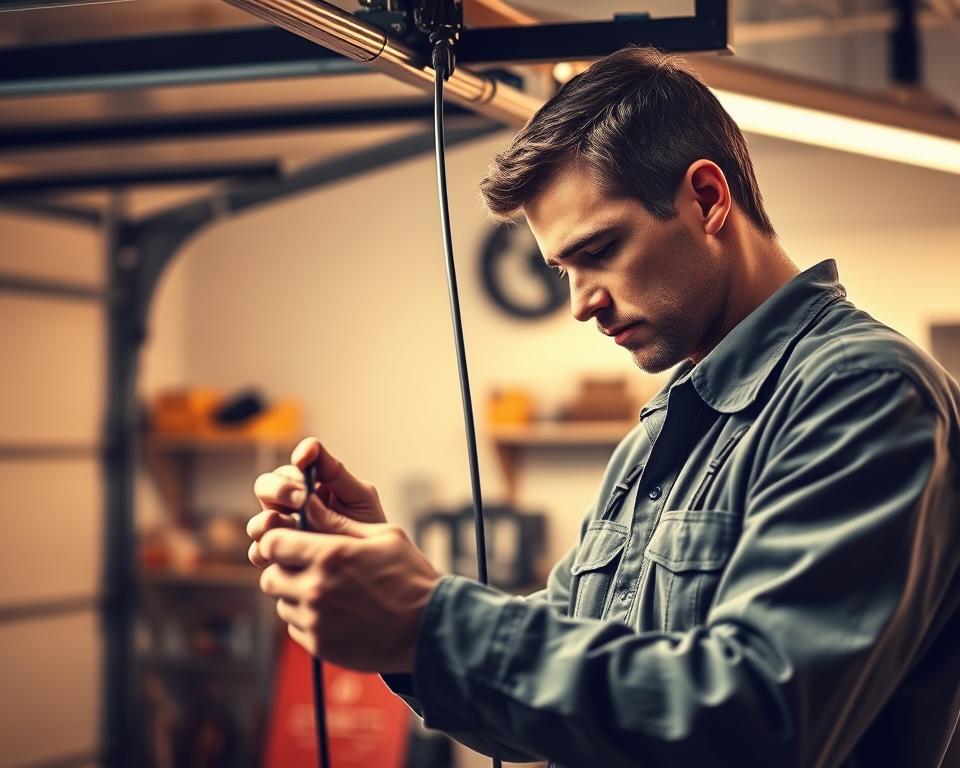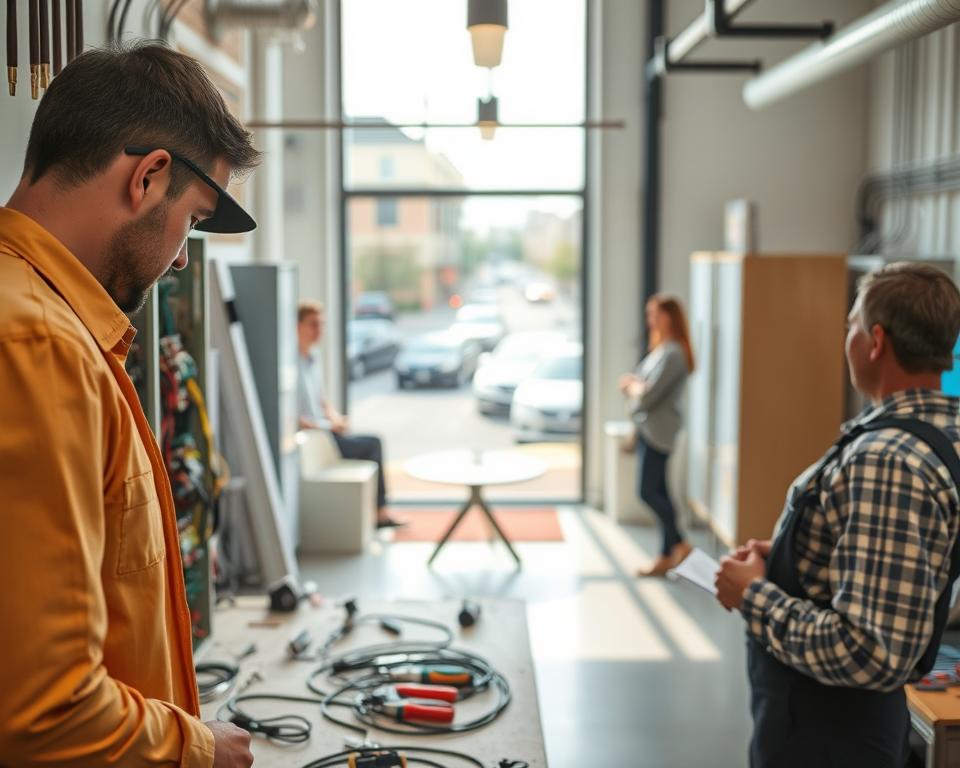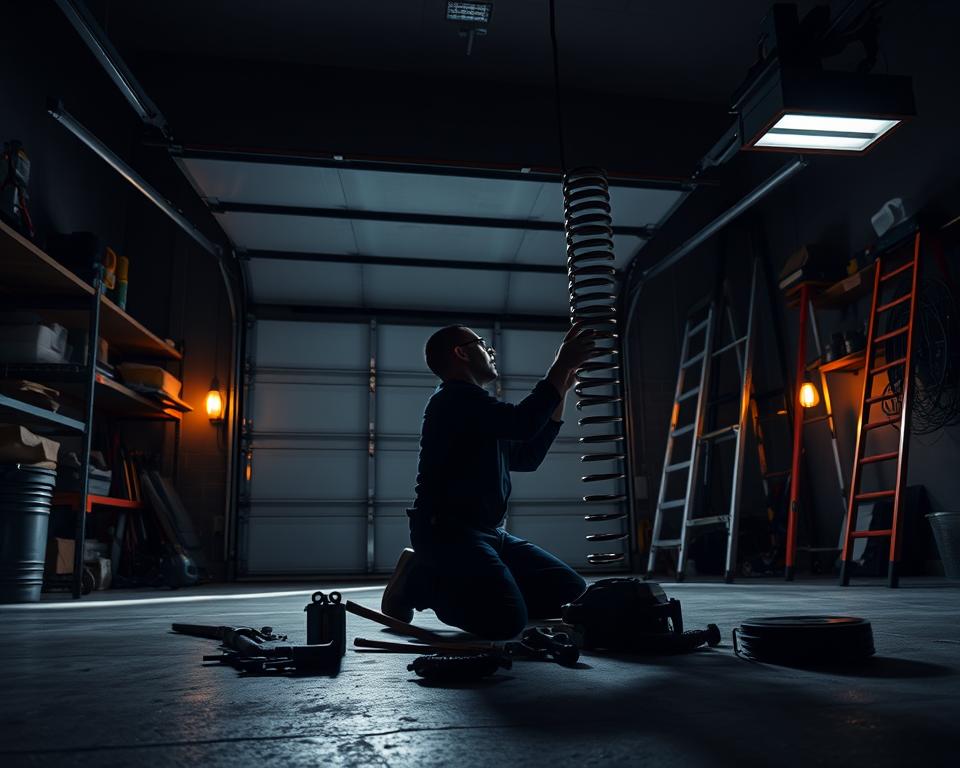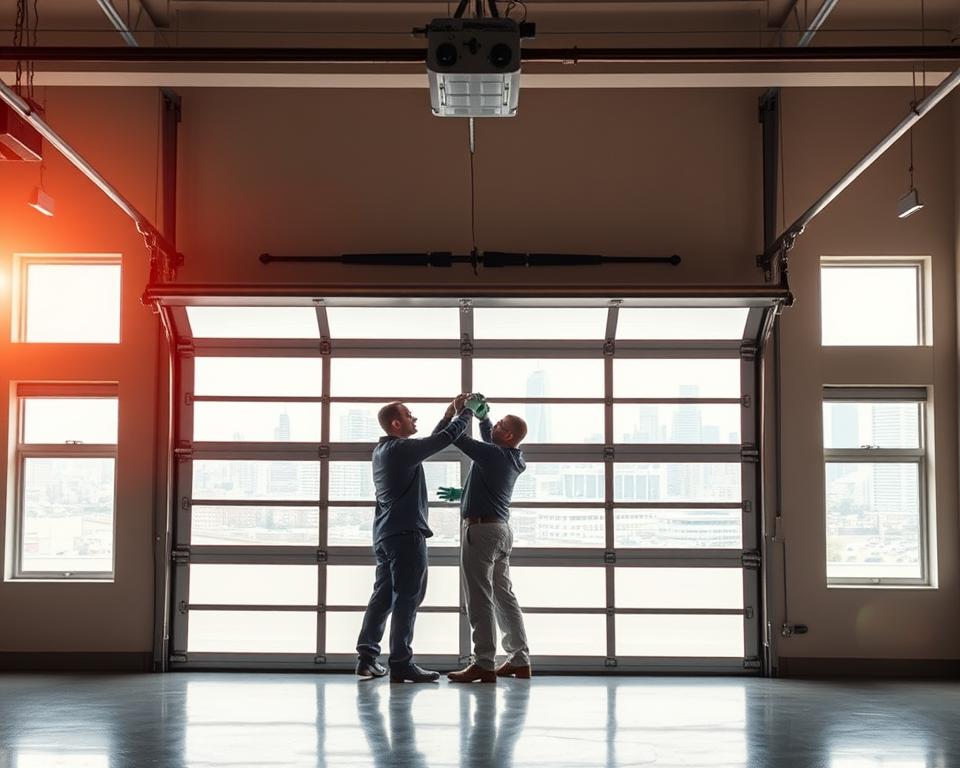Local Garage Door Repair in Huntington Beach – Professional Service
Have you ever reflected on how crucial a operating garage door is for your home’s security and convenience? Local garage door repair in Huntington Beach may well be the answer you seek. Coastline Garage Doors offers premium garage door services. They ensure your door operates smoothly and securely, protecting your residence from burglars and unexpected issues. Their professional team is ready to address any garage door issue, making Coastline Garage Doors your preferred option for exceptional community service.
Whether it’s a minor repair or a complete setup, they’re devoted to exceptional workmanship and support. This commitment renders them the preferred option for anyone looking for chamberlain garage door opener installation.
Essential Points
- Coastline Garage Doors specializes in local garage door repair in Huntington Beach.
- Skilled professionals for quick and efficient service.
- Comprehensive services confirm all garage door needs are met.
- Client contentment is our highest concern.
- Trustworthy results for both repairs and installations.
Benefits of Selecting Local Garage Door Repair Services
Opting for local garage door repair in Huntington Beach offers numerous benefits that enhance your experience and address concerns quickly. Local experts are well-versed in the community’s unique needs, providing solutions that are perfectly tailored for the area.
Quick Response Time
A major benefit of choosing local garage door services is their swift reaction. Neighborhood specialists can rapidly arrive at your site, limiting inactivity during emergencies. This is crucial for urgent garage door repair in Huntington Beach, where prompt intervention can avert more damage.
Knowledge of Regional Needs
Neighborhood service providers have comprehensive knowledge of the area’s specific challenges. They are familiar with local weather conditions and common wear-and-tear issues in Huntington Beach. This skill facilitates correct detection of problems and deliver trustworthy solutions.
Personalized Customer Service
Choosing local services creates a sense of community, resulting in more customized service. Community professionals focus on building strong connections with their clients, delivering attentive and customized service. Local clientele can depend on their Huntington Beach garage door services for approachable help and professional guidance on all garage door needs.
Frequent Problems with Garage Door Systems
Identifying frequent problems with garage door operation can assist property owners in mitigating issues early. Many factors contribute to the need for Huntington Beach garage door maintenance, such as wear and tear from regular operation. Major challenges often arise with openers, rollers, or springs and cables, each influencing the door’s performance and security.
Damaged Springs
Springs that have failed are one of the most prevalent issues faced by homeowners. When springs lose their tension or break entirely, the garage door may become inoperable or unsafe. Routine checks can help identify warning signs before a total collapse occurs. Immediate repair is crucial, as highlighted by garage door spring repair Huntington Beach for returning it to working order.
Defective Openers
A further typical problem, defective openers can cause disruption and irritation. When openers malfunction, it results in inconvenience. This interruption may be caused by issues such as faulty sensors or electronic malfunctions. Homeowners should engage specialists for effective Huntington Beach garage door opener repair, ensuring consistent access to their garages.

Deteriorated Rollers and Cables
Worn-out rollers and cables can greatly hinder the operation of garage doors. As these elements wear down, they can cause operational failures or lead to more extensive harm. Periodic examinations and Huntington Beach garage door maintenance can allow for early detection of these issues early, stopping further complications. Homeowners should continuously monitor the state of these components to ensure a safe and functional garage door.
Merits of Hiring Professional Garage Door Repair
Opting for expert repair services for your garage door delivers multiple benefits. It enhances security, protection, and the door’s performance. Experts, with deep knowledge of garage door mechanics, ensure your door’s reliability. Homeowners in Huntington Beach can rest easy, being aware their systems are in the hands of skilled technicians who emphasize superior work and lasting repairs.
Security and Protection
Safety is a critical concern with garage doors. Professionals can tackle issues like malfunctioning openers and broken sensors. Their expertise ensures your door works flawlessly, lowering the likelihood of mishaps and boosting home security.
Superior Components and Skilled Workmanship
Qualified technicians provide access to top-notch parts from established brands. This approach supports effective repairs and extends your garage door’s life. Expert solutions provide enduring benefits over quick fixes. Opting for professional installation in Huntington Beach ensures safety and efficiency in every component.
Sustainable Repairs
Long-lasting solutions help avoid recurring problems and lower expenses. Expert repairs ensure lasting functionality. Whether you need a complete garage door replacement or continuous upkeep in Huntington Beach or routine upkeep, experts maintain your system in prime condition, boosting property worth.
Coastline Garage Doors: Your Local Experts
As a leading provider for Huntington Beach garage door services, Coastline Garage Doors stands out known for quality and customer satisfaction. Their team features seasoned professionals adept at managing diverse garage door challenges. They perform each task with meticulous attention and expertise.
Skilled Professionals
Experienced technicians efficiently identify and remedy issues at Coastline Garage Doors. They undergo regular training to adhere to current standards. This delivers fast local garage door repair in Huntington Beach, minimizing delays.
Comprehensive Services Offered
They offer an extensive array of services covering emergency repairs, maintenance, and installations. From urgent fixes to routine maintenance and complete installations of new garage door, they have you fully supported. Their all-inclusive approach to Huntington Beach garage door services ensures hassle-free management.
Understanding Garage Door Maintenance
Regular care is essential for ensuring the longevity and performance of your garage door. Consistent maintenance averts significant complications. By pursuing Huntington Beach garage door maintenance, you can identify early signs of deterioration. This saves time and money on emergency repairs.
Value of Routine Checks
Regular evaluations help identify small issues before escalation. These evaluations ought to encompass:
- Examining cables and rollers for signs of wear
- Testing the operation of the opener
- Inspecting the condition of springs
Fixing these issues quickly improves safety and performance. It ensures your garage door works smoothly.
Adjusting and Aligning Your Door
Periodic fine-tuning ensures continuous smooth operation. This process comprises:
- Oiling moving components to minimize friction
- Securing fasteners to ensure structural integrity
- Adjusting sensor alignment for efficiency
With a bit of care, your garage door’s efficiency can be greatly improved. This underscores the benefit of routine upkeep in preventing costly fixes.
| Service Item |
Frequency |
Benefits |
| General Examination |
Every Month |
Early detection of issues |
| Oiling |
Once every 3-6 months |
Reduced friction |
| Tension Tuning |
Yearly |
Extended durability |
Emergency Garage Door Repair in Huntington Beach
Facing a sudden garage door crisis is daunting. Property owners benefit from prompt emergency response in Huntington Beach. Coastline Garage Doors meets this need with dedicated emergency garage door repair Huntington Beach services, available 24/7, guaranteeing support around the clock.
24/7 Availability
24/7 service in Huntington Beach offers constant reassurance, with experienced professionals on call 24/7, including holidays. This minimizes delays curbs long delays.
Rapid Response to Emergencies
When an unexpected problem strikes, time is critical. Rapid local service in Huntington Beach ensures swift intervention, with Coastline Garage Doors equipped to quickly identify and resolve challenges, facilitating a quick return to normalcy.
Budget-Friendly Garage Door Repair in Huntington Beach
Budget-friendly repair solutions are crucial for residents in Huntington Beach, and Coastline Garage Doors emphasizes transparent pricing with no hidden fees. Clear, upfront estimates mean no unexpected charges. They combine high-quality repairs with competitive pricing.
Transparent Pricing
Coastline Garage Doors’ transparent pricing model simplifies the often-complex world of repair costs. With unambiguous pricing details, customers are fully aware. This policy of openness ensures you get the most value from your garage door services.
Attractive Deals and Reductions
They provide special offers and markdowns to ease repair costs. Introductory offers for new clients and loyalty benefits for returning customers are available. This emphasis on cost-effectiveness renders their solutions affordable to everyone.
Garage Door Installation and Replacement
Upgrading your garage door boosts aesthetic appeal and operational efficiency. Choosing the right garage door requires careful consideration of several factors. These involve considerations such as construction, style, and thermal efficiency, which are essential for appearance and operation. Understanding these elements is key to a successful Huntington Beach garage door installation or replacement Huntington Beach.
Choosing the Right Garage Door
Homeowners should evaluate several key aspects when selecting a garage door:
- Material: Selections include steel, aluminum, wood, and fiberglass
- Style: Various styles such as traditional, carriage house, or contemporary designs can match your home’s architecture
- Insulated models deliver enhanced thermal efficiency and comfort
Such assessments guide you in choosing a door that satisfies both practicality and style.
Quality Installation Steps
After selecting the ideal garage door, professional installation is essential for optimal functionality. The installation process commonly includes multiple phases:
- Initial assessment to measure the space and ensure compatibility with the selected door
- Preparation of the existing opening, which may involve repairs or adjustments
- Affixing the door firmly and ensuring accurate alignment
- Conducting safety tests to confirm correct functionality
- A concluding review to confirm client contentment and resolve queries
Following this process results in a seamless installation in Huntington Beach, resulting in enduring functionality and happy customers.
Real Experiences and Achievements
Customer testimonials offer a glimpse into the quality of service provided by Coastline Garage Doors. Happy customers frequently recount their experiences, enhancing trust in Huntington Beach services, highlighting the effectiveness and reliability of Huntington Beach garage door services and encouraging new customers to choose Coastline for their needs.
Genuine Testimonials from Happy Customers
- “Coastline Garage Doors came to my rescue when my garage door wouldn’t open. The technician arrived within 30 minutes and had everything fixed in no time. Highly recommend their local garage door repair in Huntington Beach!”
- “I was impressed by the prompt service and expertise. The team at Coastline was professional and used quality parts for my garage door replacement. Their Huntington Beach garage door services are top-notch!”
- “After struggling with a faulty opener for months, I decided to call Coastline. Best decision ever! They provided such great service, and my garage door works perfectly now.”
Scheduled Upkeep Plans
Routine care ensures your garage door remains efficient. Coastline Garage Doors provides tailored maintenance programs. These comprise periodic check-ups with extensive self-assessment checklists. By committing to Huntington Beach garage door maintenance, you prevent expensive fixes while maintaining seamless operation. These plans greatly reduce the need for emergency garage door repair Huntington Beach in the future.
Routine Maintenance Sessions
Regular maintenance sessions are essential for keeping your door in optimal condition, identifying early signs of wear, keeping the system running optimally.
Enrolling in a maintenance program offers peace of mind, with regular expert maintenance.
Detailed Self-Maintenance Guides
They provide comprehensive maintenance guides for self-inspection, covering important tasks like testing safety features and lubricating parts. Adhering to these guidelines facilitates proper upkeep, reducing the need for emergency garage door repair Huntington Beach. It’s a wise choice for every homeowner.
Urgent Garage Door Repair in Huntington Beach
Facing a sudden garage door crisis is stressful. Residents require prompt and reliable emergency repair in Huntington Beach. Coastline Garage Doors offers 24/7 urgent repair solutions in Huntington Beach, with assistance available at all hours.
Around-the-Clock Service
24/7 service in Huntington Beach offers constant reassurance, with expert technicians available at all hours. This ensures minimal downtime reduces the likelihood of prolonged inconvenience.
Rapid Response to Emergencies
Prompt action is crucial when issues occur. Local garage door repair in Huntington Beach aims for a quick response to emergencies, with Coastline Garage Doors prepared to promptly assess and repair problems, helping homeowners get back to their routines without delay.
Cost-Effective Garage Door Repair in Huntington Beach
In Huntington Beach, finding affordable garage door repair is a top priority for homeowners, and Coastline Garage Doors is dedicated to clear pricing, ensuring no hidden costs. Transparent quotes allow for informed decisions. They combine high-quality repairs with competitive pricing.
Clear Cost Structure
Coastline Garage Doors’ transparent pricing model simplifies the often-complex world of repair costs. With unambiguous pricing details, you can decide with confidence. This policy of openness guarantees you get the most value from your garage door services.
Exclusive Offers and Savings
Exclusive deals help lower overall maintenance expenses. Both first-time and repeat customers receive attractive discounts. This emphasis on cost-effectiveness renders their solutions affordable to everyone.
Garage Door Installation and Replacement
A new garage door significantly enhances both your home’s appearance and performance. Selecting an ideal garage door involves evaluating various aspects. These encompass factors like material, design, and insulation, which are vital for aesthetics and functionality. Understanding these elements is key to a successful Huntington Beach garage door installation or replacement Huntington Beach.
Selecting the Perfect Garage Door
Property owners need to consider various important criteria when choosing a garage door:
- Material: Options include steel, aluminum, wood, and fiberglass
- Style: Various styles such as traditional, carriage house, or contemporary designs can match your home’s architecture
- Insulated models deliver enhanced thermal efficiency and comfort
Evaluating these factors ensures the selected door fits functional and visual requirements.
Expert Installation Procedure
Once the perfect garage door is chosen, expert installation guarantees peak performance. The installation process commonly includes multiple phases:
- Initial measurements and compatibility checks are conducted
- Preparation of the existing opening, which may involve repairs or adjustments
- Securely mounting the door and checking for proper alignment
- Testing safety features to ensure correct functionality
- A final check to guarantee satisfaction and answer any concerns
Following this process results in a seamless installation in Huntington Beach, ensuring durability and high client contentment.
Customer Testimonials and Success Stories
Customer testimonials offer a glimpse into the quality of service provided by Coastline Garage Doors. Testimonials build credibility and encourage new clients for local repairs in Huntington Beach, demonstrating the consistent quality of services in Huntington Beach and motivating potential clients to opt for Coastline.
Genuine Testimonials from Happy Customers
- “Coastline Garage Doors came to my rescue when my garage door wouldn’t open. The technician arrived within 30 minutes and had everything fixed in no time. Highly recommend their local garage door repair in Huntington Beach!”
- “I was impressed by the prompt service and expertise. The team at Coastline was professional and used quality parts for my garage door replacement. Their Huntington Beach garage door services are top-notch!”
- “After struggling with a faulty opener for months, I decided to call Coastline. Best decision ever! They provided such great service, and my garage door works perfectly now.”
Customized Maintenance Programs
Routine care ensures your garage door remains efficient. Coastline Garage Doors offers customized maintenance plans. These feature regular inspections and comprehensive maintenance guides. By committing to Huntington Beach garage door maintenance, you avoid costly repairs and ensure your door operates smoothly and safely. This proactive strategy markedly decreases urgent repair needs.
Planned Service Inspections
Scheduled tune-ups are critical for garage door upkeep, spotting small issues to prevent escalation, keeping the system running optimally.
By joining a maintenance plan, homeowners can rest easy, knowing their garage door gets expert care on a regular basis.
Extensive Upkeep Checklists
Homeowners receive thorough checklists for effective upkeep, including steps such as safety checks and lubrication applications. By following these steps, homeowners can help maintain their garage doors effectively, reducing the need for emergency garage door repair Huntington Beach. A smart preventive measure for all.
Emergency Garage Door Repair in Huntington Beach
Facing a sudden garage door crisis is stressful. Homeowners in Huntington Beach need a dependable service that acts fast in urgent situations. Coastline Garage Doors meets this need with dedicated emergency garage door repair Huntington Beach services, available 24/7, guaranteeing support around the clock.
24/7 Availability
Having emergency garage door repair Huntington Beach available at all times brings peace of mind, with experienced professionals on call 24/7, including holidays. This ensures minimal downtime limits extended interruptions.
Rapid Response to Emergencies
Prompt action is crucial when issues occur. Timely emergency response is prioritized in Huntington Beach, with Coastline Garage Doors equipped to quickly identify and resolve challenges, ensuring minimal disruption to daily life.
Real Experiences and Achievements
Real customer feedback highlights the high standard of work delivered by Coastline Garage Doors. Testimonials build credibility and encourage new clients for local repairs in Huntington Beach, highlighting the effectiveness and reliability of Huntington Beach garage door services and motivating potential clients to opt for Coastline.
Real Feedback from Satisfied Clients
- “Coastline Garage Doors came to my rescue when my garage door wouldn’t open. The technician arrived within 30 minutes and had everything fixed in no time. Highly recommend their local garage door repair in Huntington Beach!”
- “I was impressed by the prompt service and expertise. The team at Coastline was professional and used quality parts for my garage door replacement. Their Huntington Beach garage door services are top-notch!”
- “After struggling with a faulty opener for months, I decided to call Coastline. Best decision ever! They provided such great service, and my garage door works perfectly now.”
Customized Maintenance Programs
Consistent upkeep is essential for your garage door’s performance. Coastline Garage Doors delivers personalized upkeep services. These comprise planned service sessions with extensive self-assessment checklists. By committing to Huntington Beach garage door maintenance, you avoid costly repairs and ensure your door operates smoothly and safely. Such preventive measures significantly lower future emergency requirements.
Scheduled Tune-Ups
Scheduled tune-ups are critical for garage door upkeep, detecting minor problems before they turn into expensive fixes, maintaining smooth operation.
Participating in scheduled upkeep provides assurance, with confidence in continuous professional service.
Detailed Self-Maintenance Guides
Homeowners receive thorough checklists for effective upkeep, covering important tasks like testing safety features and lubricating parts. Adhering to these guidelines facilitates proper upkeep, reducing the need for emergency garage door repair Huntington Beach. An effective strategy for property care.
Urgent Garage Door Repair in Huntington Beach
Encountering an urgent door issue is challenging. Residents require prompt and reliable emergency repair in Huntington Beach. Coastline Garage Doors meets this need with dedicated emergency garage door repair Huntington Beach services, available 24/7, with assistance available at all hours.
Always-On Support
Having emergency garage door repair Huntington Beach available at all times brings peace of mind, with skilled technicians ready to help, day or night, even on holidays. This ensures minimal downtime curbs long delays.
Quick Response in Urgent Situations
In emergencies, every minute counts. Timely emergency response is prioritized in Huntington Beach, with Coastline Garage Doors ready to swiftly diagnose and fix issues, ensuring minimal disruption to daily life.
Client Feedback and Case Studies
Real customer feedback highlights the high standard of work delivered by Coastline Garage Doors. Satisfied clients often share their experiences, building trust and credibility for local garage door repair in Huntington Beach, demonstrating the consistent quality of services in Huntington Beach and encouraging new customers to choose Coastline for their needs.
Real Feedback from Satisfied Clients
- “Coastline Garage Doors came to my rescue when my garage door wouldn’t open. The technician arrived within 30 minutes and had everything fixed in no time. Highly recommend their local garage door repair in Huntington Beach!”
- “I was impressed by the prompt service and expertise. The team at Coastline was professional and used quality parts for my garage door replacement. Their Huntington Beach garage door services are top-notch!”
- “After struggling with a faulty opener for months, I decided to call Coastline. Best decision ever! They provided such great service, and my garage door works perfectly now.”
Maintenance Plans for Your Garage Door
Regular maintenance is key to keeping your garage door in top shape. Coastline Garage Doors provides tailored maintenance programs. These comprise planned service sessions with extensive self-assessment checklists. By engaging in Huntington Beach garage door maintenance, you prevent expensive fixes while maintaining seamless operation. This proactive strategy markedly decreases urgent repair needs.
Routine Maintenance Sessions
Scheduled tune-ups are critical for garage door upkeep, spotting small issues to prevent escalation, keeping the system running optimally.
Enrolling in a maintenance program offers peace of mind, with confidence in continuous professional service.
Comprehensive Checklists for Homeowners
Coastline Garage Doors gives homeowners detailed checklists for self-assessment, covering important tasks like testing safety features and lubricating parts. Adhering to these guidelines facilitates proper upkeep, reducing the need for emergency garage door repair Huntington Beach.
Urgent Garage Door Repair in Huntington Beach
Facing a sudden garage door crisis is stressful. Residents require prompt and reliable emergency repair in Huntington Beach. Coastline Garage Doors meets this need with dedicated emergency garage door repair Huntington Beach services, available 24/7, with assistance available at all hours.
Around-the-Clock Service
Round-the-clock availability ensures you’re never left stranded, with experienced professionals on call 24/7, including holidays. This minimizes delays reduces the likelihood of prolonged inconvenience.
Swift Emergency Action
In emergencies, every minute counts. Local garage door repair in Huntington Beach aims for a quick response to emergencies, with Coastline Garage Doors prepared to promptly assess and repair problems, helping homeowners get back to their routines without delay.
Client Feedback and Case Studies
Customer testimonials offer a glimpse into the quality of service provided by Coastline Garage Doors. Satisfied clients often share their experiences, building trust and credibility for local garage door repair in Huntington Beach, demonstrating the consistent quality of services in Huntington Beach and inspiring others to select Coastline.
Genuine Testimonials from Happy Customers
- “Coastline Garage Doors came to my rescue when my garage door wouldn’t open. The technician arrived within 30 minutes and had everything fixed in no time. Highly recommend their local garage door repair in Huntington Beach!”
- “I was impressed by the prompt service and expertise. The team at Coastline was professional and used quality parts for my garage door replacement. Their Huntington Beach garage door services are top-notch!”
- “After struggling with a faulty opener for months, I decided to call Coastline. Best decision ever! They provided such great service, and my garage door works perfectly now.”
Maintenance Plans for Your Garage Door
Routine care ensures your garage door remains efficient. Coastline Garage Doors offers customized maintenance plans. These include scheduled tune-ups and detailed checklists for homeowners. By investing in Huntington Beach garage door maintenance, you avoid costly repairs and ensure your door operates smoothly and safely. Such preventive measures significantly lower future emergency requirements.
Routine Maintenance Sessions
Scheduled tune-ups are critical for garage door upkeep, detecting minor problems before they turn into expensive fixes, keeping the system running optimally.
Participating in scheduled upkeep provides assurance, with regular expert maintenance.
Comprehensive Checklists for Homeowners
They provide comprehensive maintenance guides for self-inspection, spanning activities like verifying safety systems and routine lubrication. Adhering to these guidelines facilitates proper upkeep, reducing the need for emergency garage door repair Huntington Beach.
Emergency Garage Door Repair in Huntington Beach
Dealing with a garage door emergency can be overwhelming. Homeowners in Huntington Beach need a dependable service that acts fast in urgent situations. Coastline Garage Doors offers 24/7 urgent repair solutions in Huntington Beach, guaranteeing support around the clock.
Always-On Support
Round-the-clock availability ensures you’re never left stranded, with expert technicians available at all hours. This minimizes delays curbs long delays.
Quick Response in Urgent Situations
When an unexpected problem strikes, time is critical. Local garage door repair in Huntington Beach aims for a quick response to emergencies, with Coastline Garage Doors ready to swiftly diagnose and fix issues, helping homeowners get back to their routines without delay.
Client Feedback and Case Studies
Real customer feedback highlights the high standard of work delivered by Coastline Garage Doors. Happy customers frequently recount their experiences, enhancing trust in Huntington Beach services, demonstrating the consistent quality of services in Huntington Beach and inspiring others to select Coastline.
Real Feedback from Satisfied Clients
- “Coastline Garage Doors came to my rescue when my garage door wouldn’t open. The technician arrived within 30 minutes and had everything fixed in no time. Highly recommend their local garage door repair in Huntington Beach!”
- “I was impressed by the prompt service and expertise. The team at Coastline was professional and used quality parts for my garage door replacement. Their Huntington Beach garage door services are top-notch!”
- “After struggling with a faulty opener for months, I decided to call Coastline. Best decision ever! They provided such great service, and my garage door works perfectly now.”
Customized Maintenance Programs
Consistent upkeep is essential for your garage door’s performance. Coastline Garage Doors delivers personalized upkeep services. These comprise planned service sessions with extensive self-assessment checklists. By investing in Huntington Beach garage door maintenance, you minimize the need for urgent repairs and ensure safe functionality. These plans greatly reduce the need for emergency garage door repair Huntington Beach in the future.
Routine Maintenance Sessions
Regular maintenance sessions are essential for keeping your door in optimal condition, detecting minor problems before they turn into expensive fixes, ensuring your garage door system works perfectly.
By joining a maintenance plan, homeowners can rest easy, with confidence in continuous professional service.
Extensive Upkeep Checklists
They provide comprehensive maintenance guides for self-inspection, covering important tasks like testing safety features and lubricating parts. By following these steps, homeowners can help maintain their garage doors effectively, lowering the likelihood of emergency fixes.
Urgent Garage Door Repair in Huntington Beach
Encountering an urgent door issue is challenging. Property owners benefit from swift, effective emergency response in Huntington Beach. Coastline Garage Doors meets this need with dedicated emergency garage door repair Huntington Beach services, available 24/7, ensuring help is always just a call away, no matter the time.
Always-On Support
Having emergency garage door repair Huntington Beach available at all times brings peace of mind, with expert technicians available at all hours. This approach limits extended interruptions.
Rapid Response to Emergencies
Prompt action is crucial when issues occur. Rapid local service in Huntington Beach ensures swift intervention, with Coastline Garage Doors ready to swiftly diagnose and fix issues, helping homeowners get back to their routines without delay.
In Summary
Choosing the right service provider for garage door repairs is vital for your home’s safety and functionality. With a variety of choices, it’s imperative to find a reliable expert who understands your garage door’s unique needs. Coastline Garage Doors is recognized as a premier provider for local repairs in Huntington Beach with exceptional service.
Opting for Coastline guarantees prompt action, skilled repairs, and personalized services. They emphasize client care and use cutting-edge methods to deliver dependable service. For anyone in need of nearby repair, Coastline Garage Doors provides superior service and reassurance. Ensure your door’s reliability by selecting a renowned local expert.










